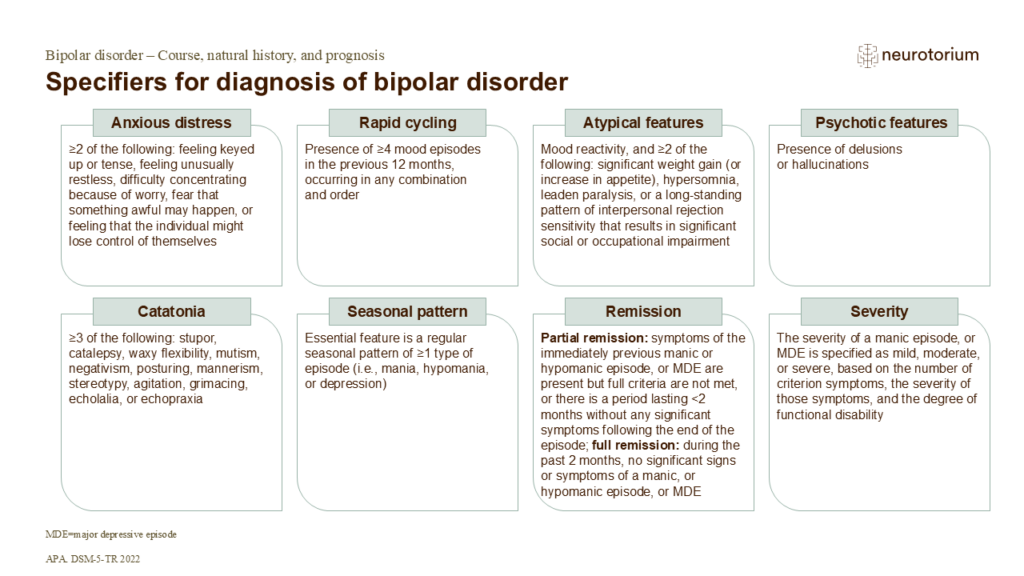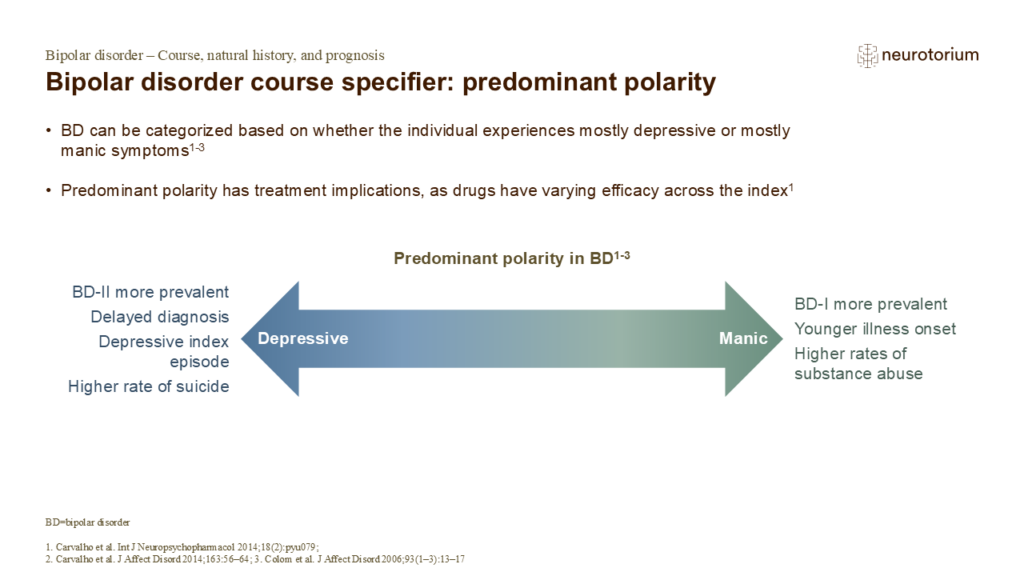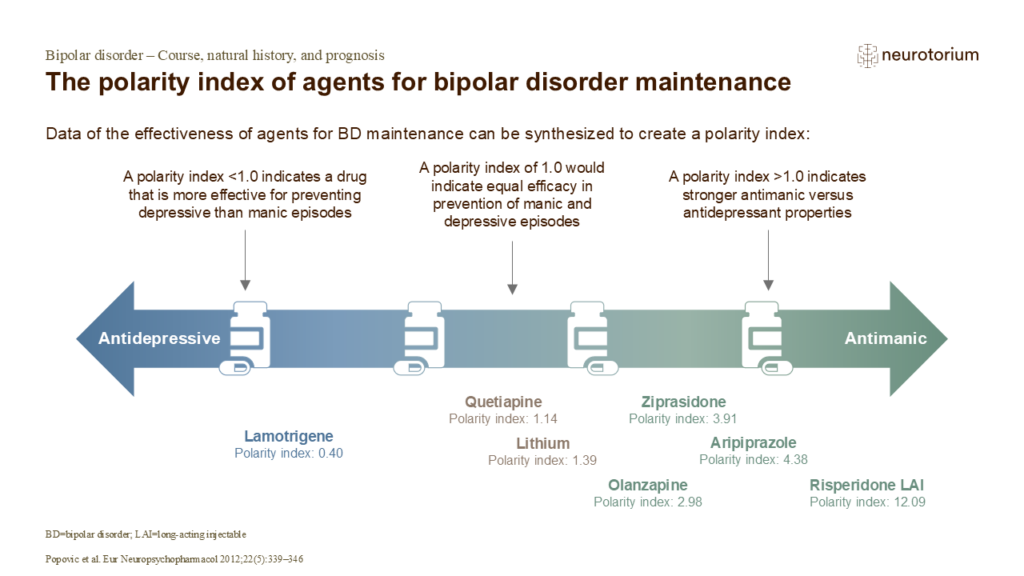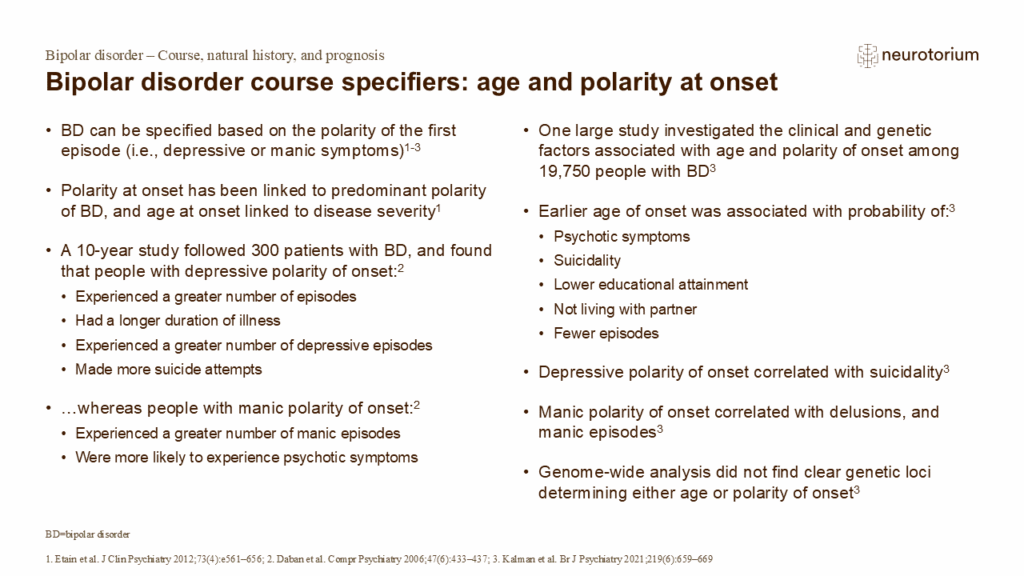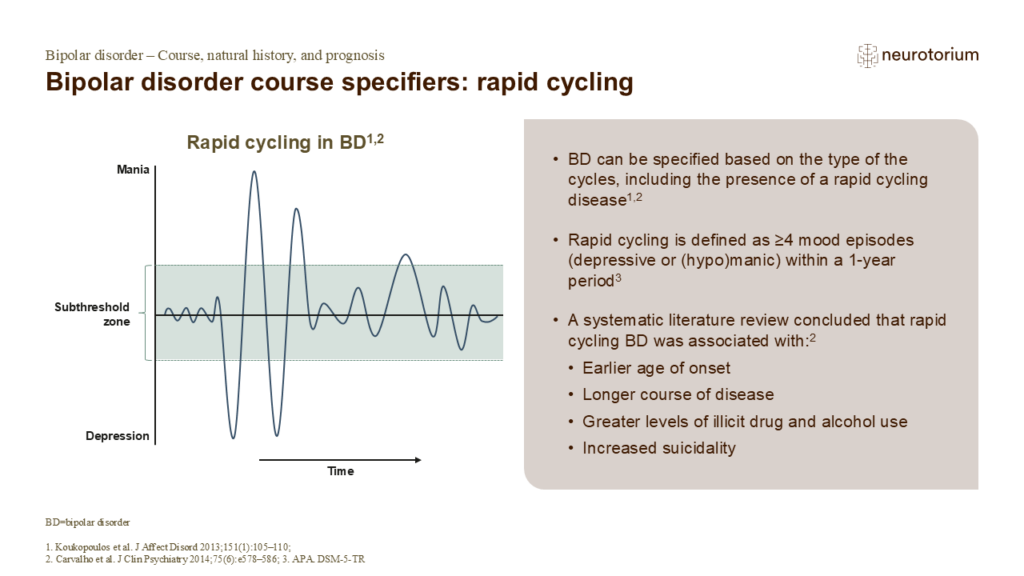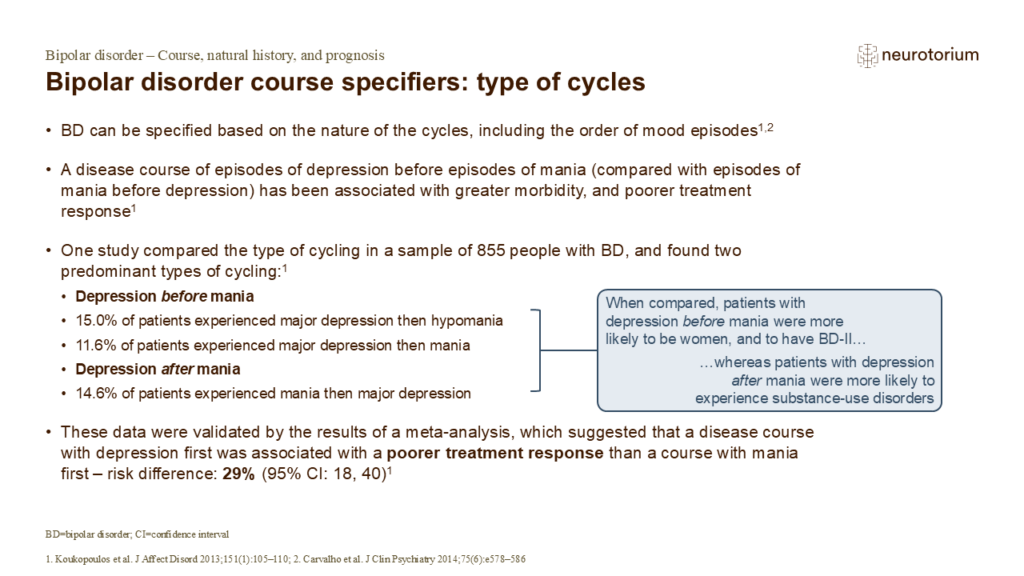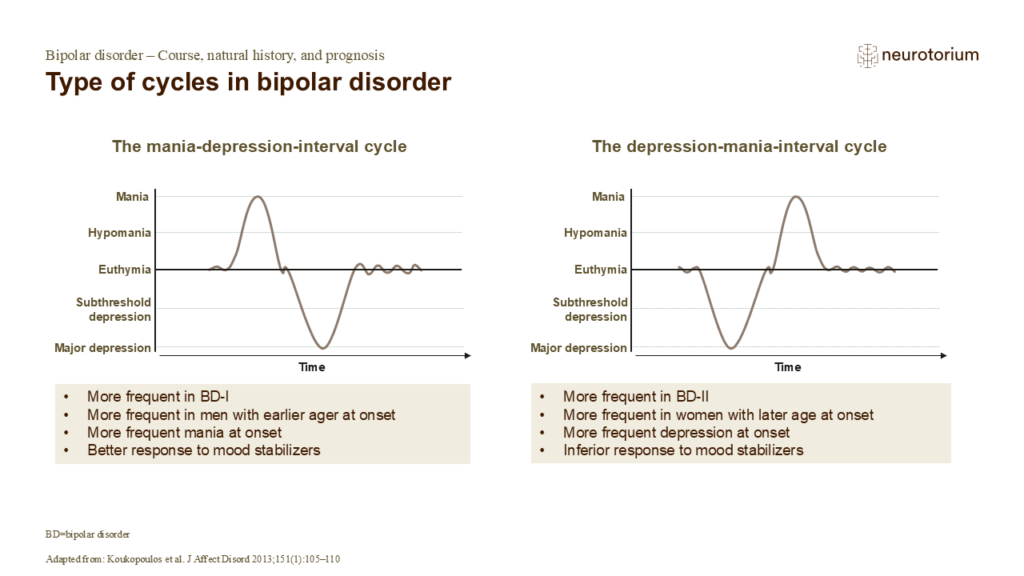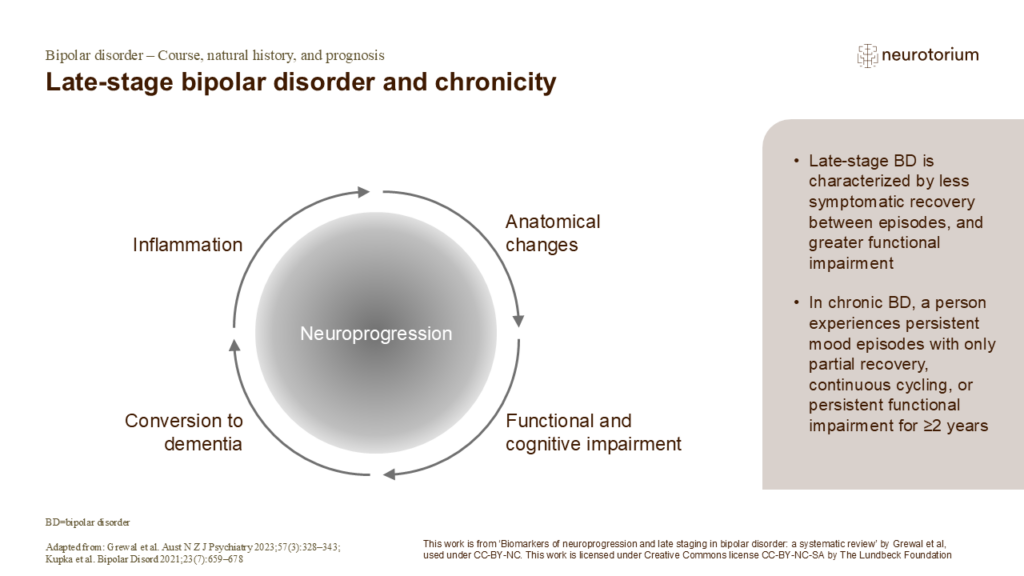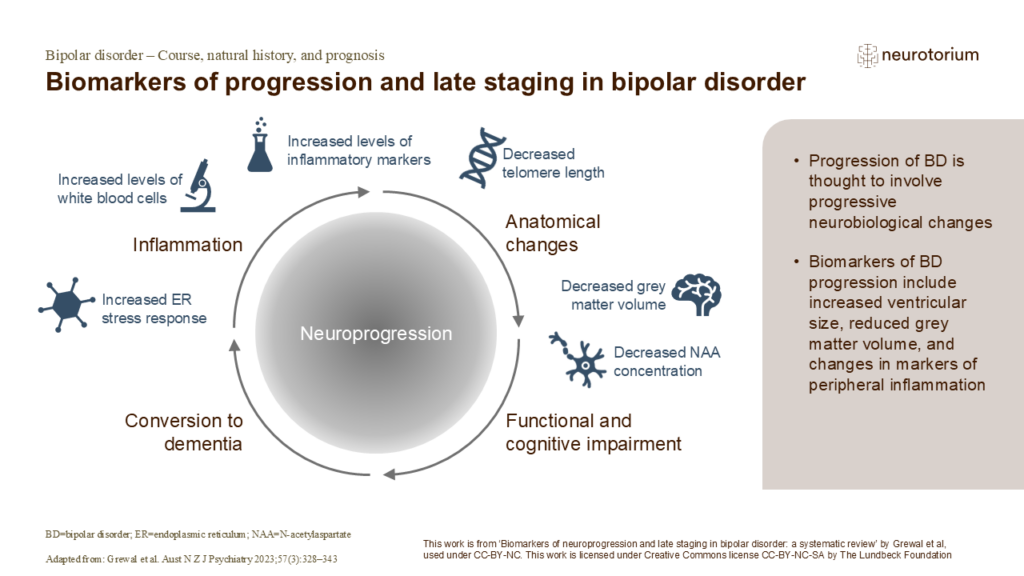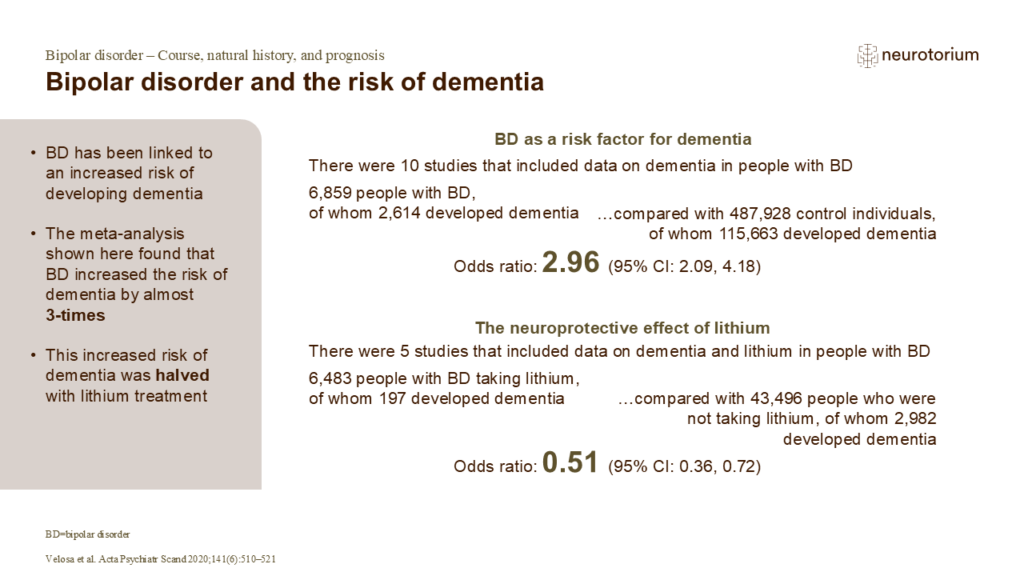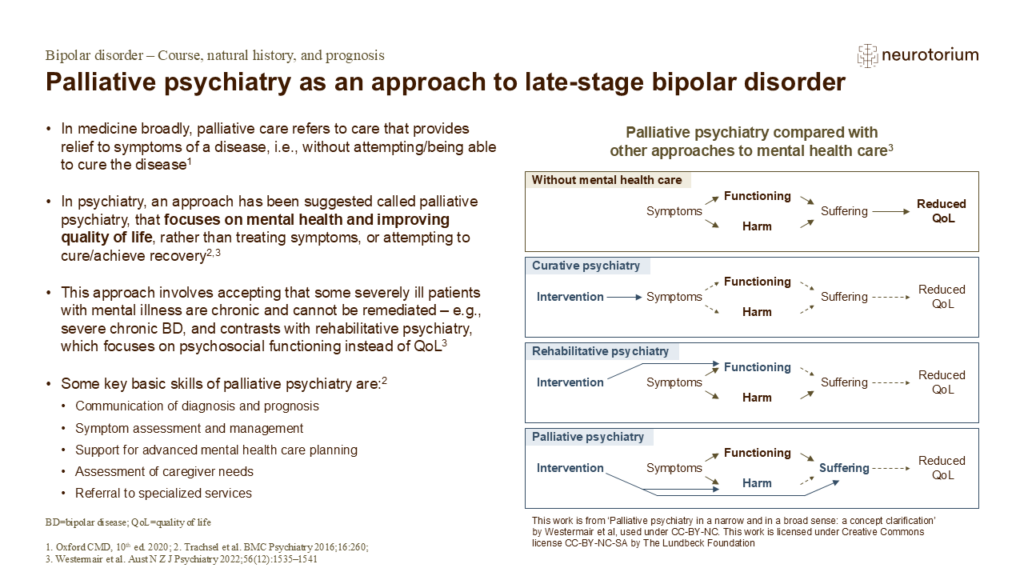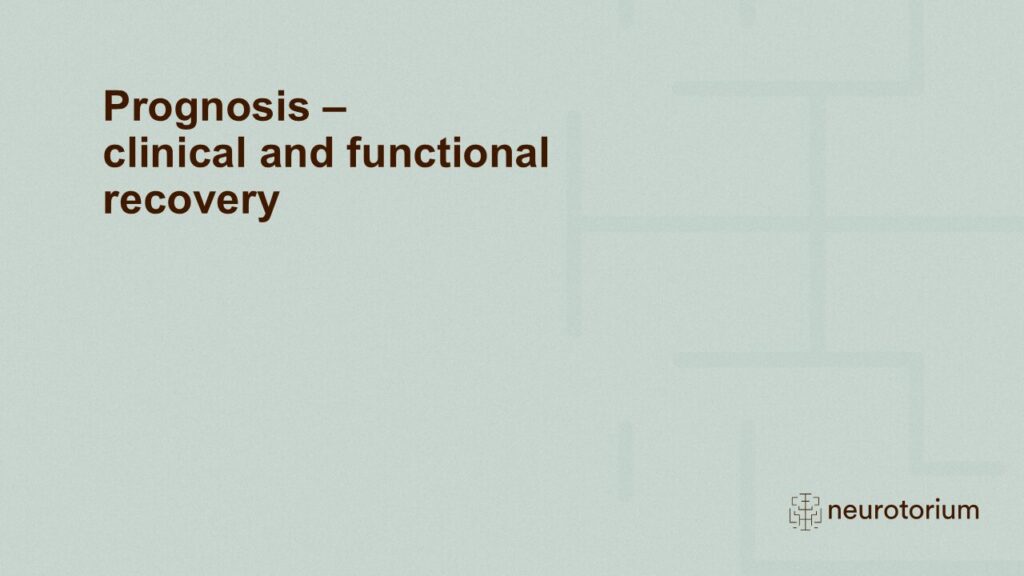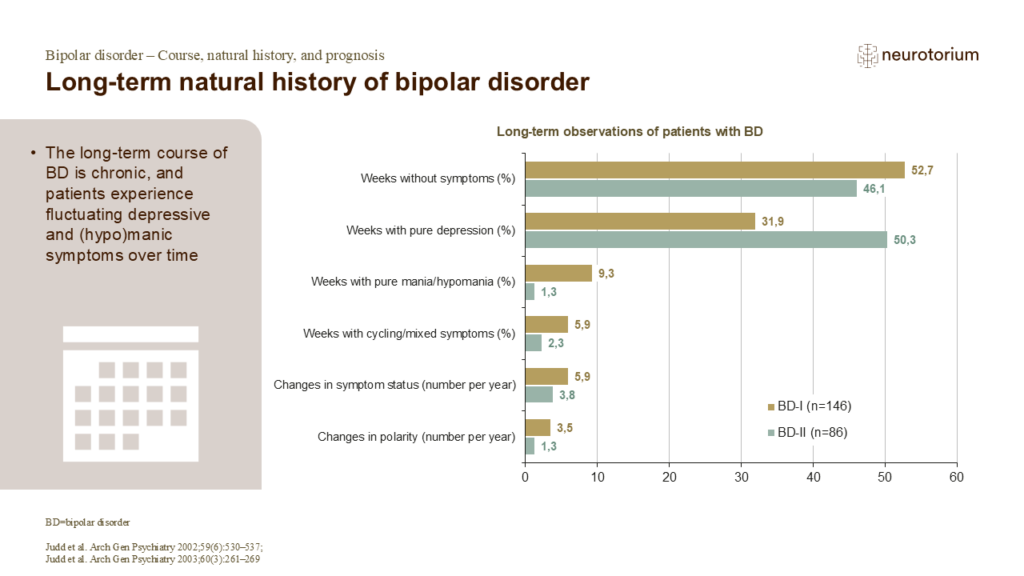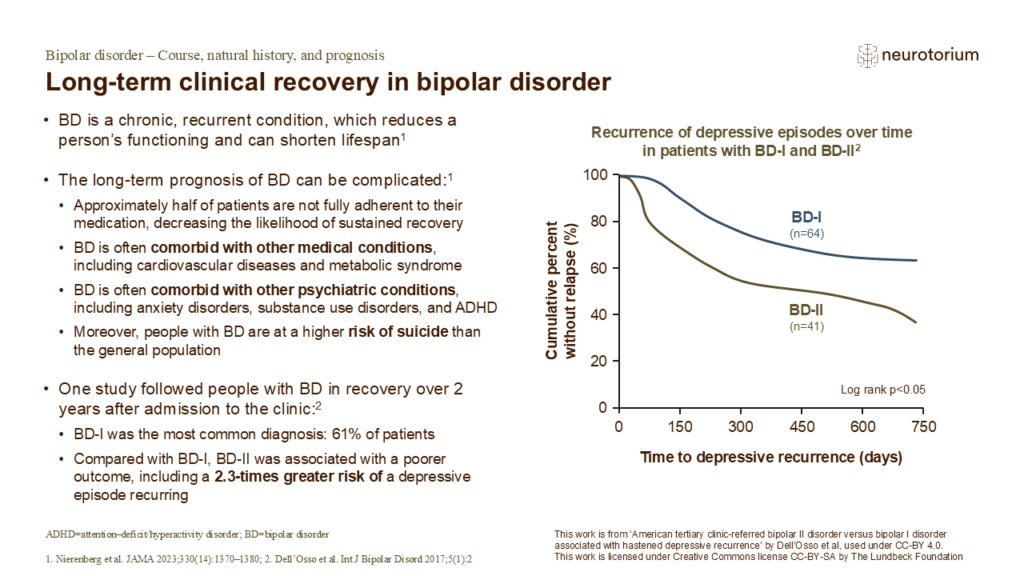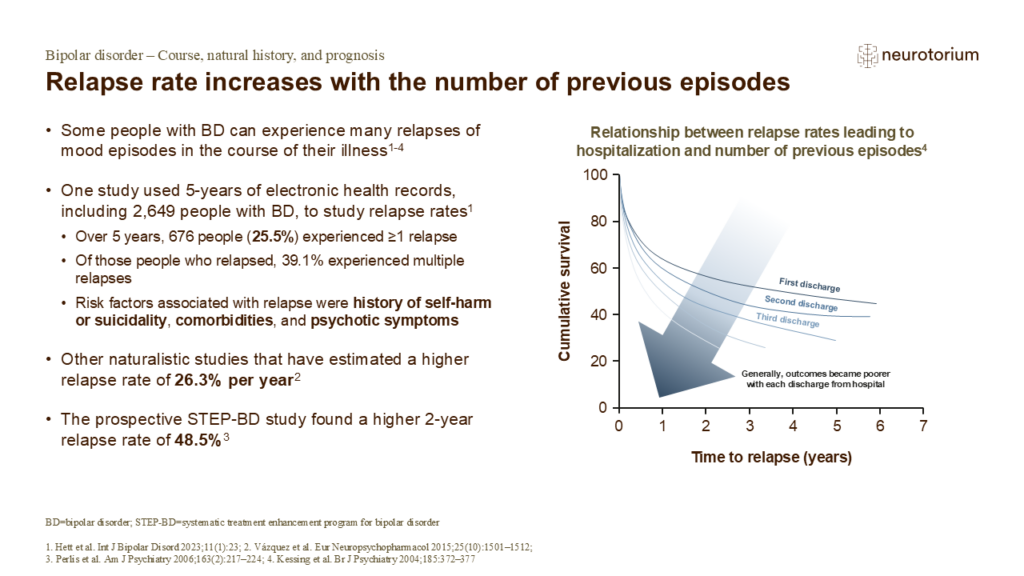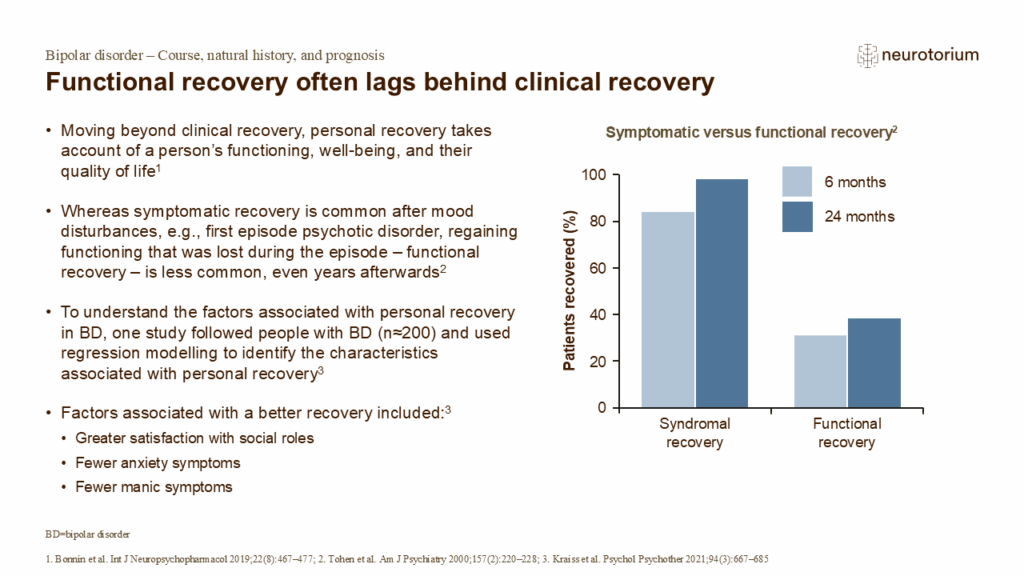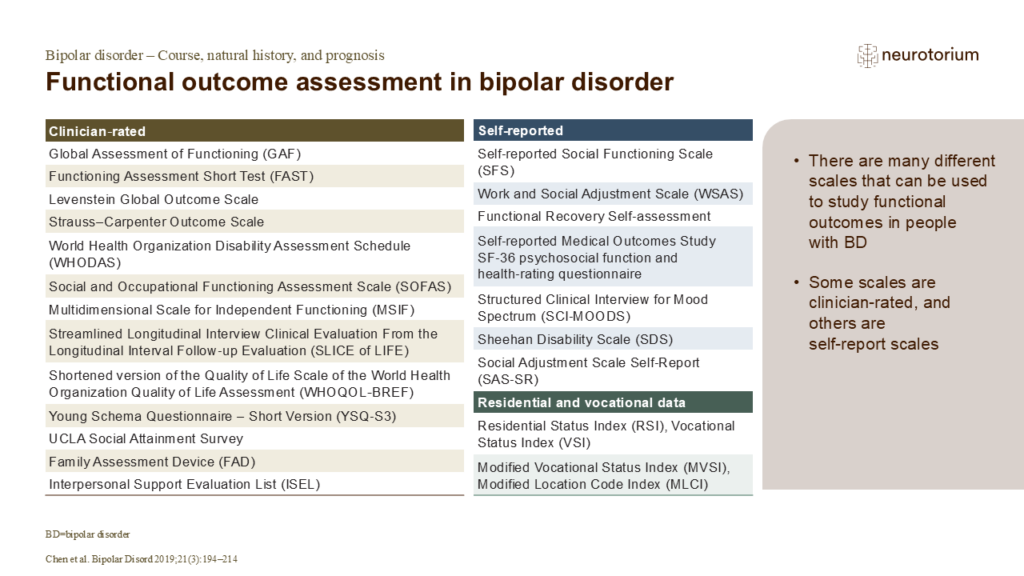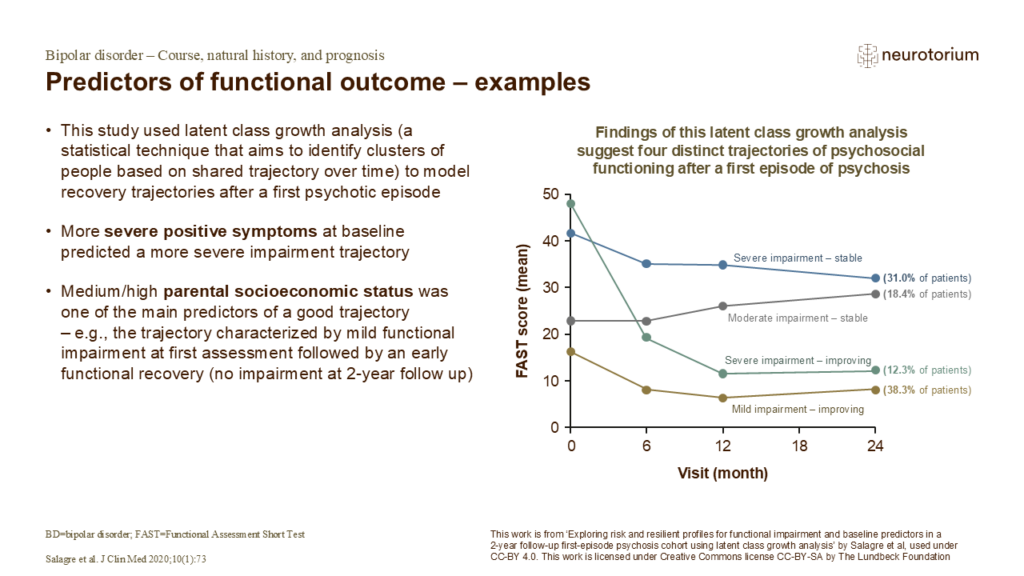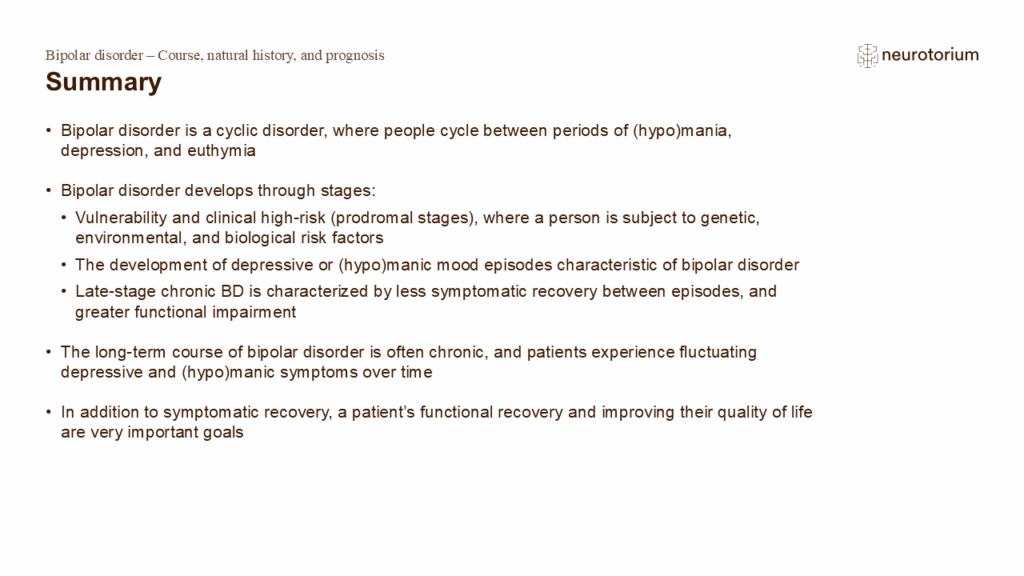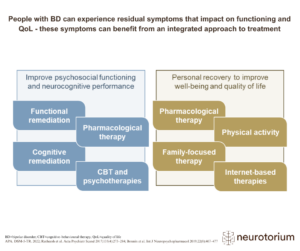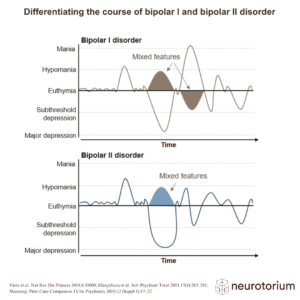Index for
slide deck
Introduction
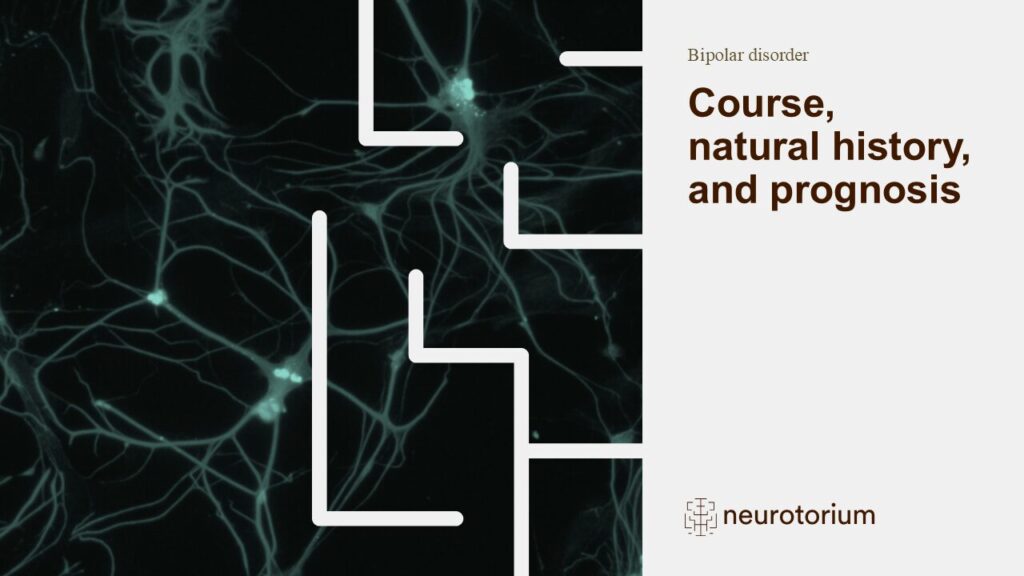
Course, natural history, and prognosis
Introduction

Introduction
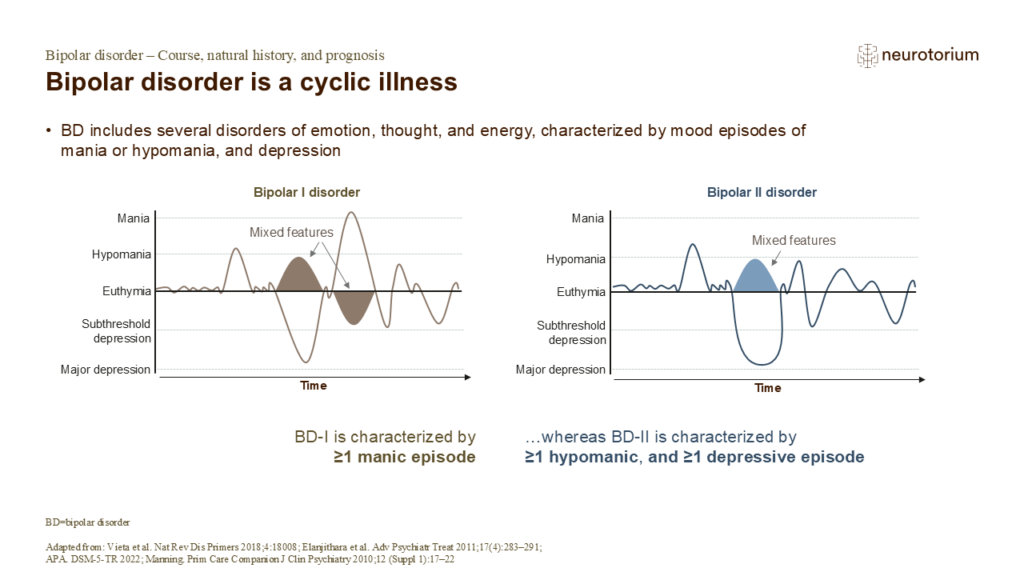
Bipolar disorder is a cyclic illness
As shown on the slide, bipolar disorder is a cyclic disorder, where people cycle between periods of (hypo)mania, depression, and euthymia.1-5 The duration of these periods can vary; a study following 1,130 people with bipolar disorder found that on average depressive epis…
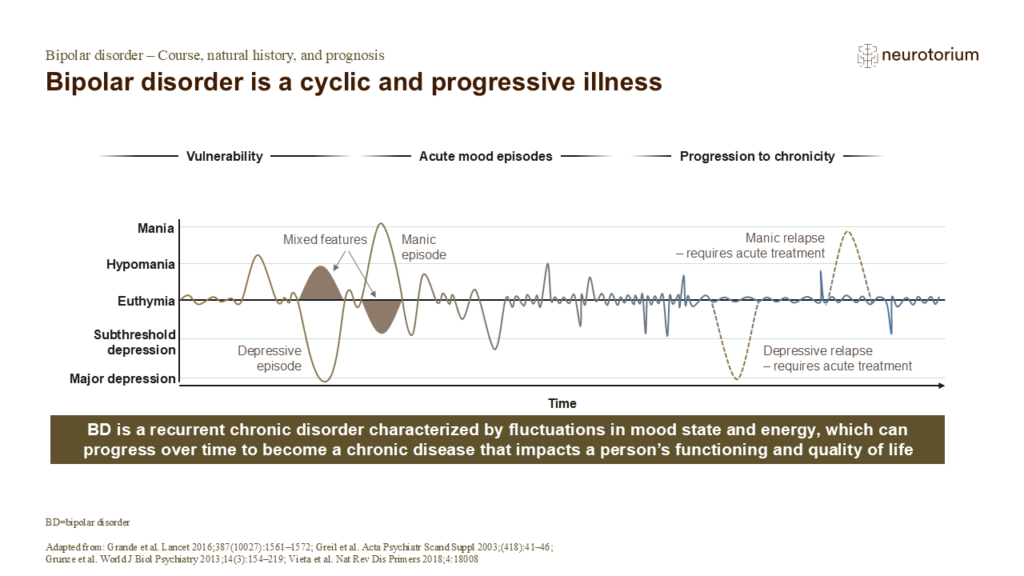
Bipolar disorder is a cyclic and progressive illness
As shown on the slide, as well as being a cyclic disorder, bipolar disorder can progress over time.1 The progressive nature of the disease, as well as the impact of the disorder on functioning and quality of life, reinforces the importance of early identification of patie…
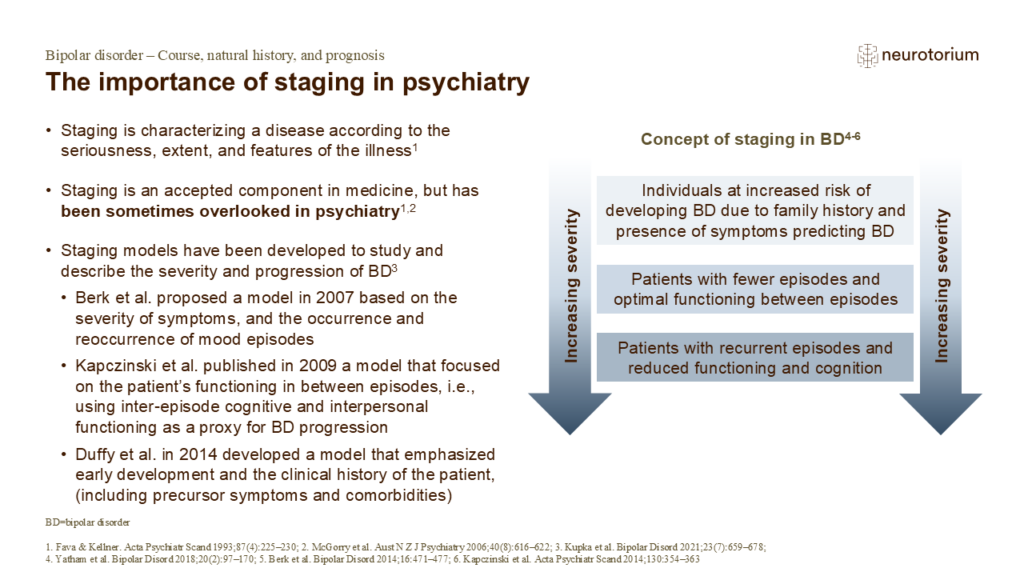
The importance of staging in psychiatry
Staging places an individual with a psychiatric disorder on a spectrum that encompasses clinical progression, ranging from prodromal or pre-disease all the way to a chronic disease state.5 In bipolar disorder, this can generally be thought of with Stage 0 representing the…
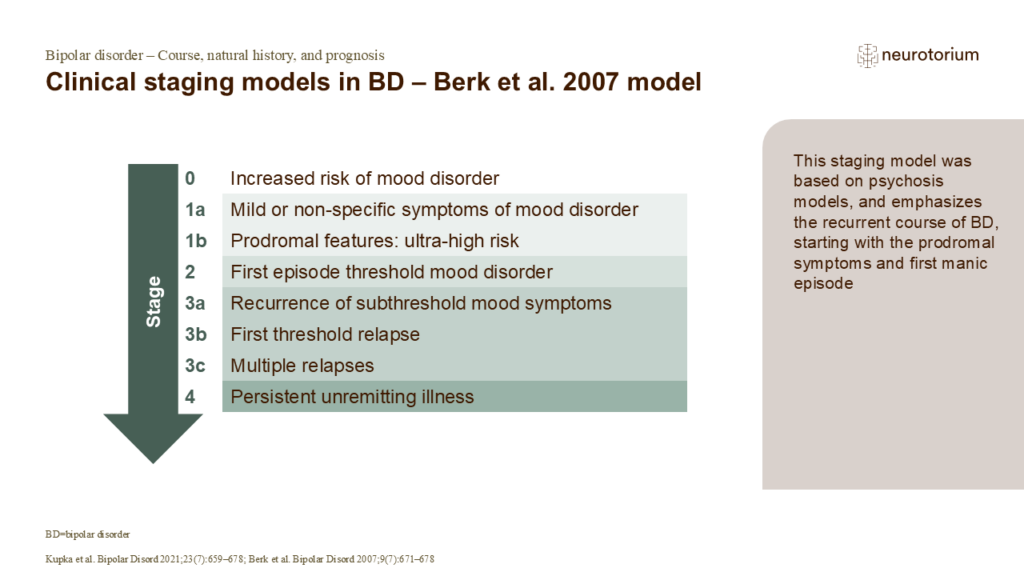
Clinical staging models in BD – Berk et al. 2007 model
Several staging models have been developed to study and describe the severity of bipolar disorder, including the Berk et al. model, the Kapczinski et al. model, and the Duffy et al. model.1 The Berk et al. model, published in 2007, incorporated the prodromal stages of the…
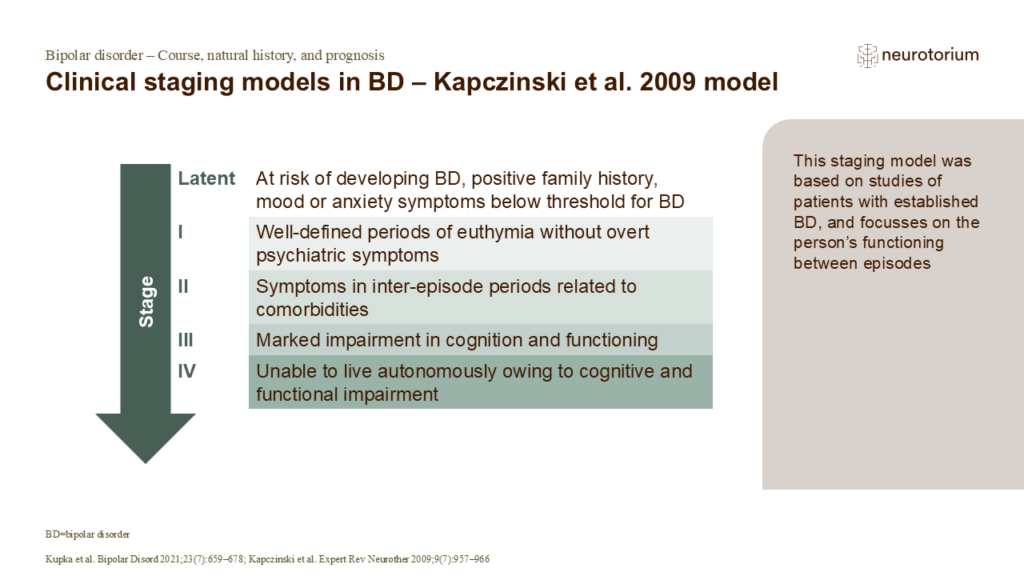
Clinical staging models in BD – Kapczinski et al. 2009 model
Several staging models have been developed to study and describe the severity of bipolar disorder, including the Berk et al. model, the Kapczinski et al. model, and the Duffy et al. model.1 In 2009, Kapczinski et al. published this model, which focused on assessing patien…
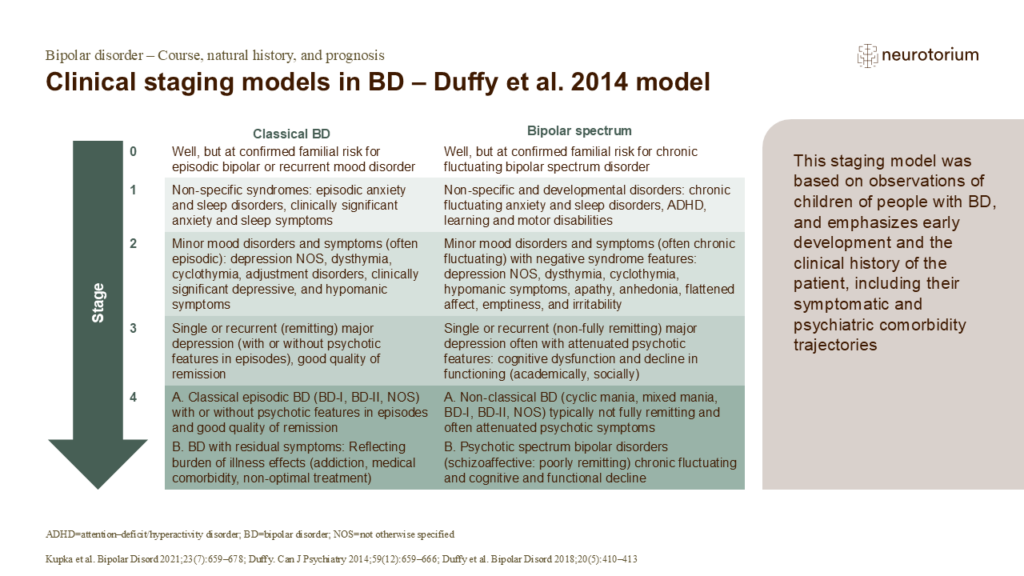
Clinical staging models in BD – Duffy et al. 2014 model
Several staging models have been developed to study and describe the severity of bipolar disorder, including the Berk et al. model, the Kapczinski et al. model, and the Duffy et al. model.1 In 2009, Kapczinski et al. published this model, which focused on assessing patien…
Vulnerability and clinical high-risk (prodromal stages)
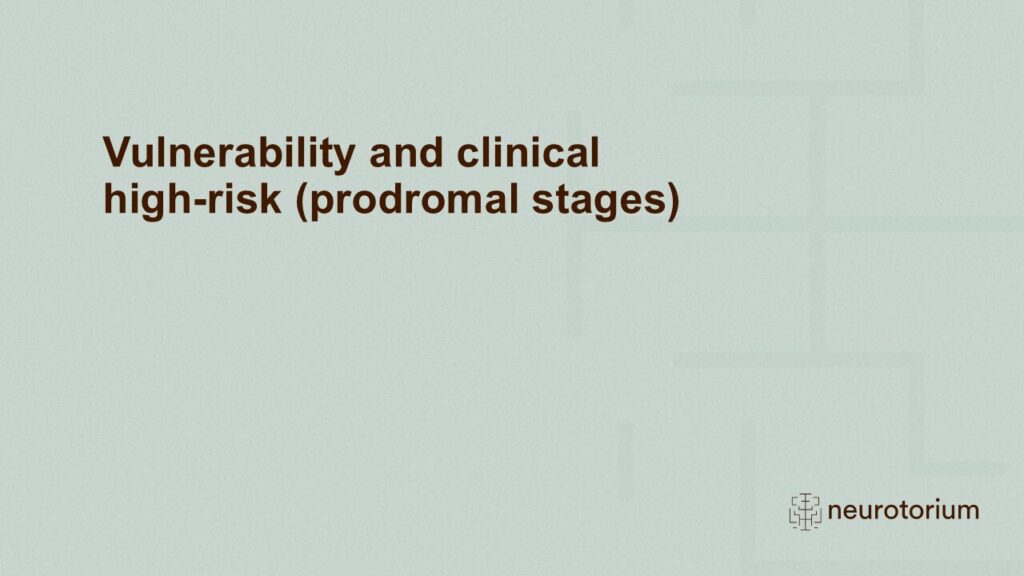
Vulnerability and clinical high-risk (prodromal stages)
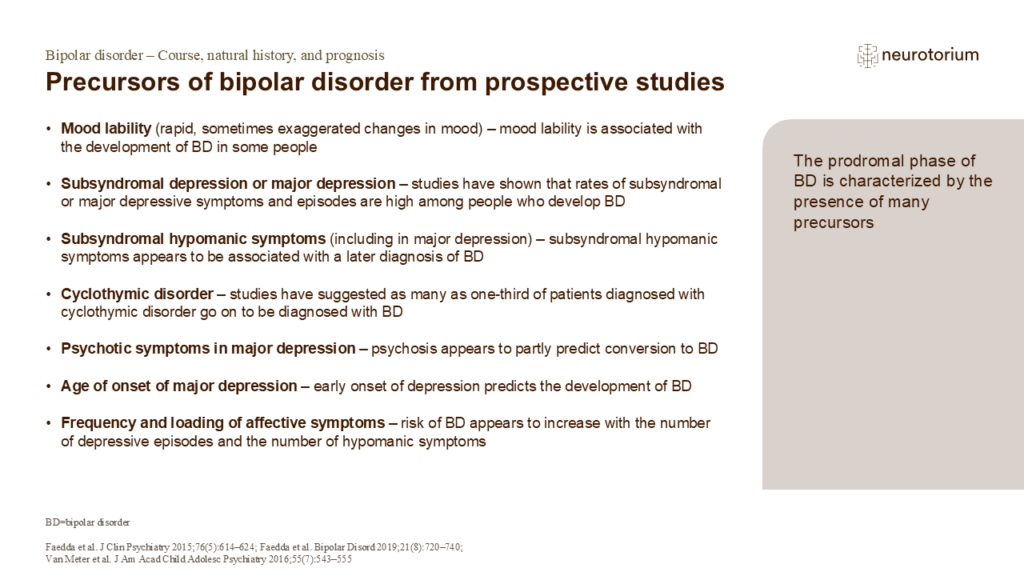
Precursors of bipolar disorder from prospective studies
A systematic literature review published in 2015 found 26 prospective longitudinal studies of the precursors of BD, which identified several different precursors as risk factors for bipolar disorder, as detailed on the slide.1
References:
1. Faedda GL, Marangoni C, Serra …
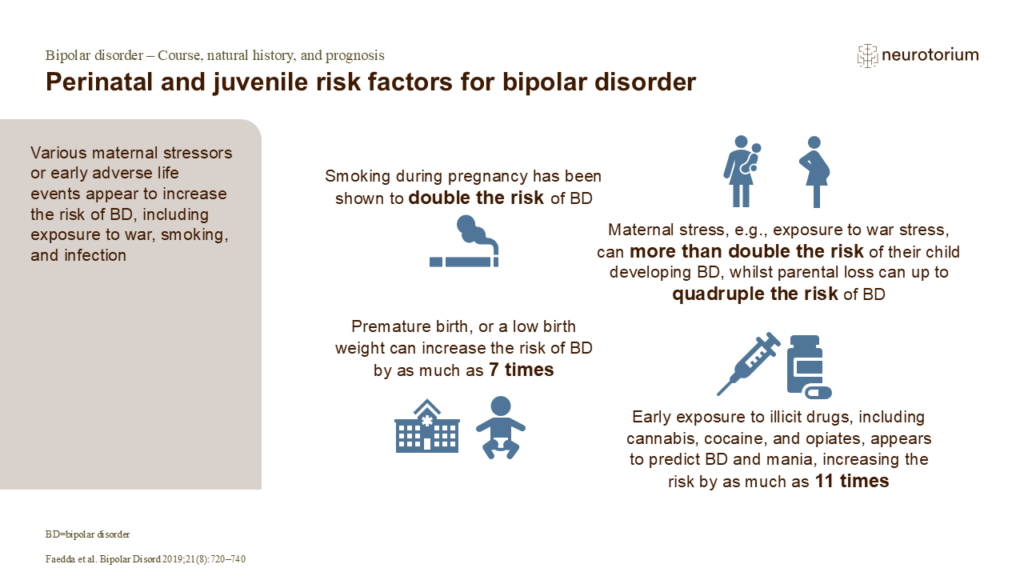
Perinatal and juvenile risk factors for bipolar disorder
Many different perinatal and juvenile factors have been shown to increase the risk of developing bipolar disorder, as outlined on the slide.1 However, disentangling the risk of bipolar disorder from that of other mood disorders can be challenging, because many of these fa…
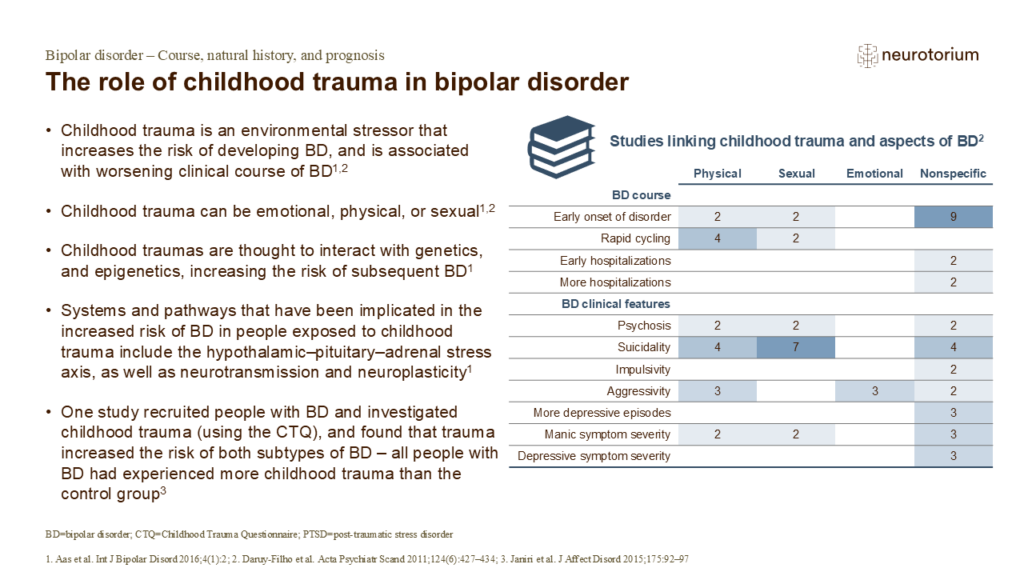
The role of childhood trauma in bipolar disorder
Many lines of evidence suggest a link between childhood trauma and bipolar disorder, and a worsening clinical course of bipolar disorder.1,2 However, there are methodological differences between studies, such as the techniques used to question people about childhood traum…
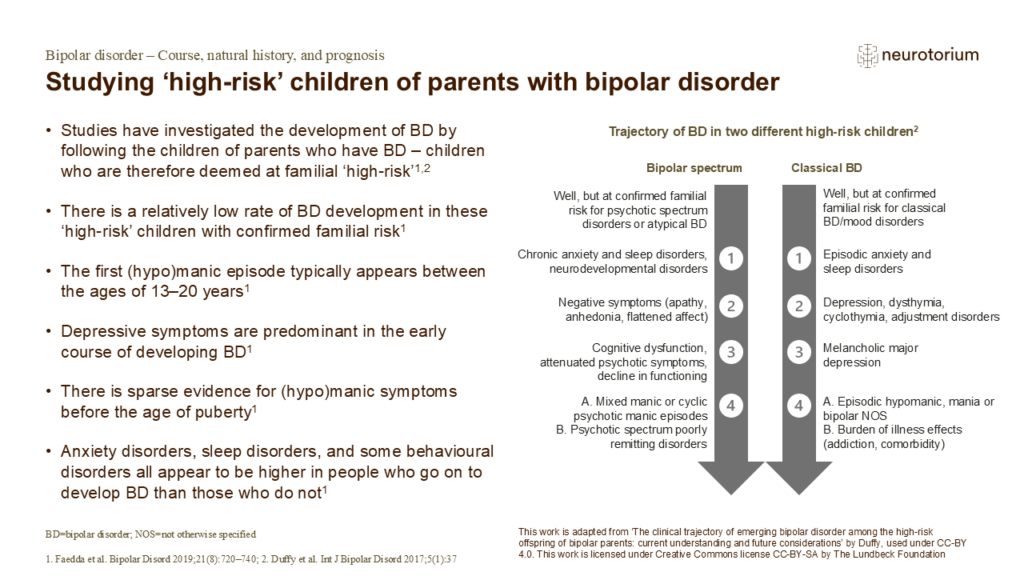
Studying ‘high-risk’ children of parents with bipolar disorder
Although such studies have been enlightening, there are challenges to studying the ‘high-risk’ children of people with bipolar disorder.2 There is a high degree of phenotypic and aetiologic heterogeneity amongst these children, and many of the early symptoms investigated …
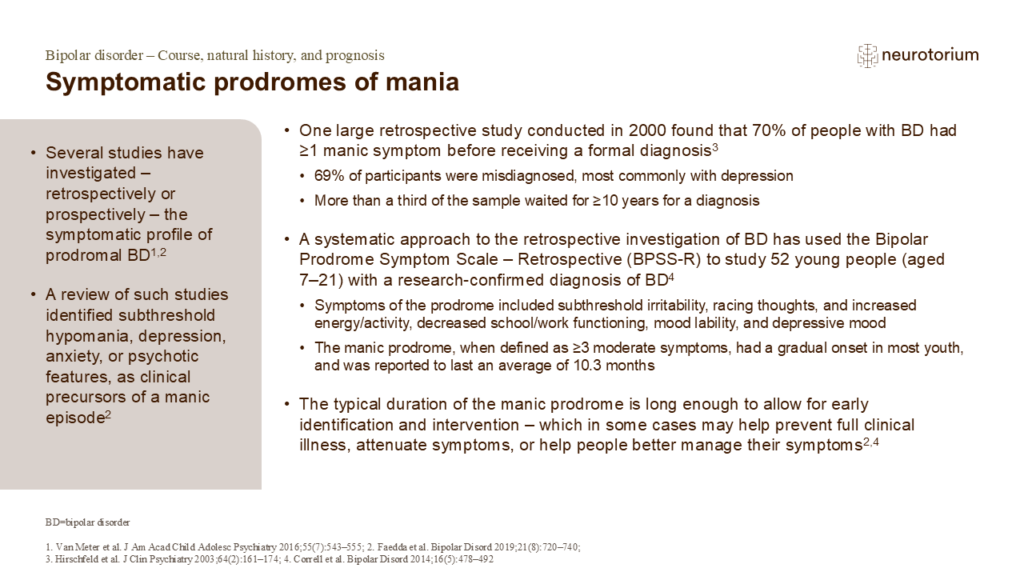
Symptomatic prodromes of mania
Another approach to studying the prodrome of mania is to define a set of factors to identify ‘bipolar at-risk’ people, such as having first‐degree family history of BD, cyclothymic features, and subthreshold depressive or manic symptoms.2 When studied in controlled, prosp…
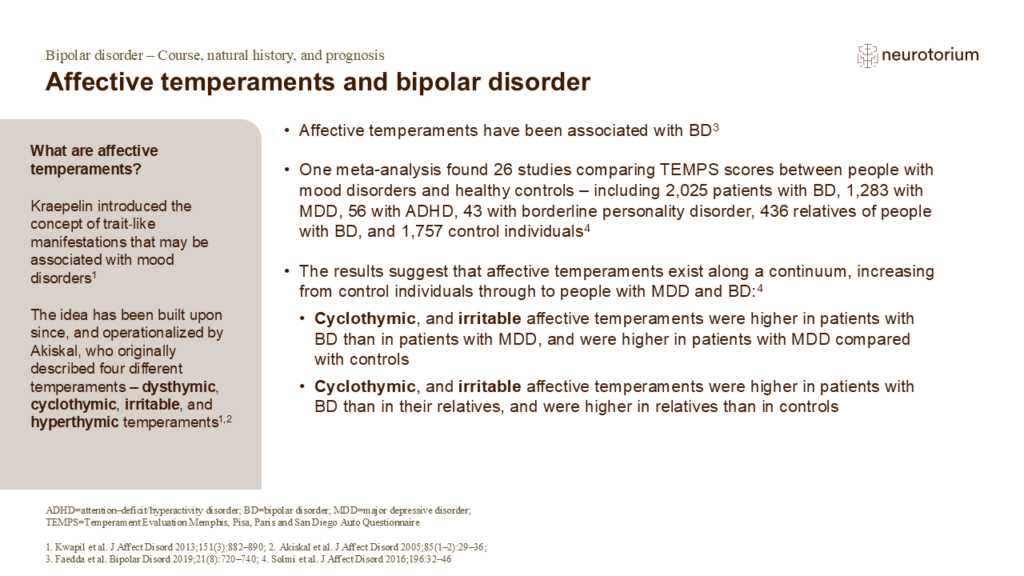
Affective temperaments and bipolar disorder
Affective temperaments are subclinical (i.e., subthreshold) trait-like manifestations, which are not necessarily linked to mood disorders.3 In other words, when viewed as the sub-threshold end of a spectrum spanning normal functioning, affective temperaments can be precur…
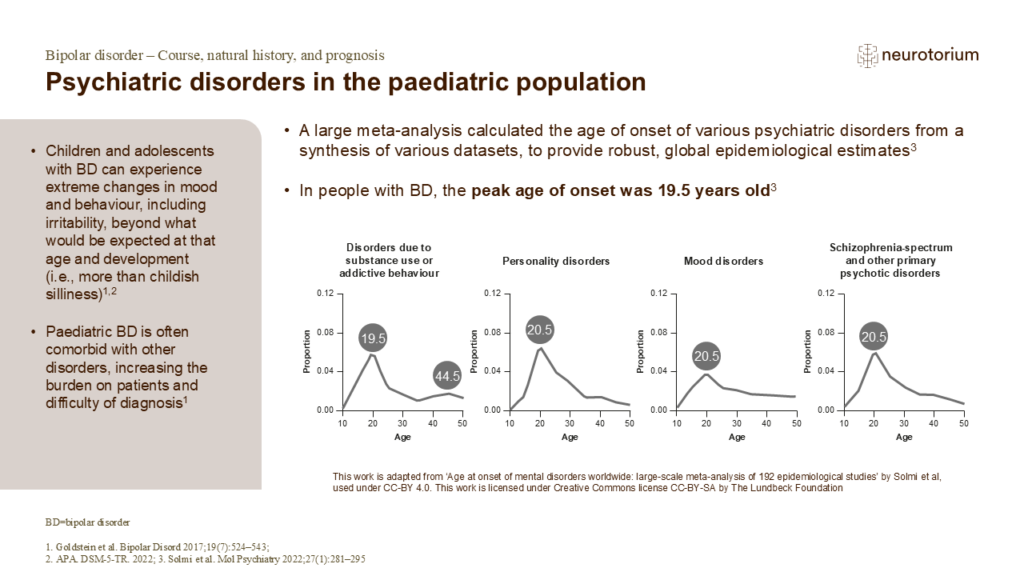
Psychiatric disorders in the paediatric population
In approaching the diagnosis of bipolar disorder in children, it is important to consider what is ‘normal’ behaviour for that child.2 In children, the presence of irritability can be used as a proxy for depressed mood, although chronic irritability in children is not suff…



